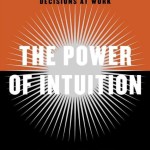“difficult conversations are almost never about getting the facts right. They are about conflicting perceptions, interpretations, and values.”
Members of the Harvard Negotiation Project — the organization that brought you the mega bestseller GETTING TO YES — show you how to handle your most difficult conversations with confidence and skill.
Whether we’re dealing with an under performing employee, disagreeing with our spouse about money or child-rearing, negotiating with a difficult client, or simply saying “no”, or “I’m sorry”, or “I love you”, we attempt to avoid difficult conversations every day. No matter how competent we are, we all have conversations that cause anxiety and frustration.
This book can help. Based on fifteen years of research at the Harvard Negotiation Project, Difficult Conversations walks you through a proven step-by-step approach for how to have your toughest conversations with less stress and more success. It shows you how to prepare yourself; how to start the conversation without defensiveness; and how to keep it constructive and focused regardless of how the other person responds. You’ll learn how to:
— Decipher the underlying structure of every difficult conversation
— Interpret the significance of what is said — and what is not
— Identify the erroneous but deeply ingrained assumptions that keep you stuck
— Manage strong emotions — yours and theirs
— Spot ways your self-image affects the conversation — and ways the conversation affects your self-image
Filled with examples from everyday life, Difficult Conversations will help you at home, on the job, or out in the world. It is a book you’ll turn to again and again for advice, practical skills, and reassurance. [From: Books.google.com]
“Depending on how we handle them, feelings can lead to great trouble. But the feelings themselves just are. In that sense, feelings are like arms or legs. If you hit or kick someone, then your arms or legs are causing trouble. But there’s nothing inherently wrong with arms or legs. The same with feelings.”
Difficult Conversations
Difficult conversations are anything that someone does not want to talk about, such as asking for a raise or complaining to a neighbor about his barking dog. People are usually reluctant to open a difficult conversation out of fear of the consequences. Typically, when the conversation does occur the parties think and feel a lot more than they actually say.
Underlying every difficult conversation are actually three deeper conversations. The “What happened?” conversation usually involves disagreement over what happened, what should happen, and who is to blame. The feelings conversation is about the parties’ emotions, and their validity. The identity conversation is an internal conversation that each party has with herself, over what the situation tells her about who she is. The authors identify common errors that people make in these sorts of conversations. The key to having effective, productive conversations is to recognize the presence of these deeper conversations, avoid the common errors, and turn difficult conversations into learning conversations.
What Happened
The first mistakes that people make as they consider what happened is that they assume they are looking at a factual matter, and they assume that their view of the matter is right. Often parties agree on the bare facts. They differ in their interpretation of what the facts mean, and of what is important. To move toward a learning conversation, parties must shift from certainty about their own views, to curiosity about the other’s views of the situation. Parties should also try to understand why they interpret the situation in the particular way they do. The authors recommend adopting the “And Stance,” acknowledging both your own views and their (differing) views.
The second set of mistakes concerns understanding the parties’ intentions. People tend to assume that they know what the other’s intentions are. However, our beliefs about another’s intentions are often wrong. We base our assumptions on our own feelings; if I feel hurt then you must have meant to be hurtful. We also tend think the worst of others, and the best of ourselves. Another mistake is to assume that once we explain that our intentions were benign, the other party has no reason to feel hurt. To avoid the first mistake, parties must avoid making the leap from impact to intent. Ask the other what their intent was. Remain open-minded about your own interpretation of their intent. Avoid the other mistake by acknowledging the other’s feelings, and by considering the possibility of your own complex motives.
A third mistakes in the “What happened?” conversation occurs when parties focus on assigning blame. “Focusing on blame is a bad idea because it inhibits our ability to learn what’s really causing the problem and to do anything meaningful to correct it.”(p. 59) The solution is to focus on mapping each party’s contribution to the situation. Contribution emphasizes understanding causes, joint responsibility, and avoiding future problems. Acknowledging one’s own contributions can help shift the other party away from blaming. Contributing to a situation does not imply being blameworthy for that situation; leaving your car unlocked contributes to its being stolen, but certainly does not make you to blame for the theft. Parties may contribute to a problematic situation by having avoided dealing with it in the past or by being unapproachable. Differences in personality or role assumptions can contribute to creating a situation. Using role reversal and adopting a disinterested perspective can help in creating a thorough map of the contribution system.
Feelings
Difficult conversations are difficult because there are feelings involved. Expressing emotions is risky, however. Thus, many people frame difficult conversations in ways that ignore their emotional content. Unexpressed feelings can leak back into conversation, and can preoccupy people so that they are unable to be good listeners. The solution is for the parties to identify and understand their feelings, negotiate them, and share them clearly.
It can be hard to know what one is feeling. Simple emotional labels can mask complex bundles of feeling. Often people translate their feelings into judgments, characterizations and attributions about the other person. The need to blame often indicates unexpressed emotions. Understanding and re-evaluating the thoughts, perceptions and beliefs that gave rise to the emotions enables us to negotiate with our own feelings, shifting or moderating them. The first step in expressing feelings is to acknowledge that they are an important part of the situation, whether they are “rational” or not. Parties should convey the full range and complexity of their feelings, and they should avoid rushing to evaluate the feelings expressed. To be effective sharing requires that the parties acknowledge each other’s feelings.
“The big three blind spots are tone of voice, facial expressions, and body language. The listener is very aware of these, the talker is not.”
Identity
Some conversations are difficult because they threaten or challenge a person’s sense of who they are: their identity. Difficult conversations may call into question a person’s competency, their goodness, or whether they are worthy of being loved. All-or-nothing thinking can make people more vulnerable to identity crises – as either lovable or worthless, good or evil. Managing the internal identity conversation requires learning which issues are most important to one’s identity, and learning how to adapt one’s identity in healthy ways. Adaptive thinking comes from adopting an “And Stance” toward the complex elements of one’s identity, and rejecting all-or-nothing thinking. The authors note that “the more easily you can admit to your own mistakes, your own mixed intentions, and your own contributions to the problem, the more balanced you will feel during the conversation, and the higher the chances it will go well.”(p. 119) Other ways to maintain a balanced sense of self in difficult conversations include not trying to control the other’s reactions, instead preparing for their reaction, imagining yourself in the future, or just taking a break from the conversation.
Letting Go
Sometimes difficult issues should be raised; others times it is best to let them go. There is no simple rule for deciding which is which, but the authors do suggests some things to consider in making such decisions. Working through the three conversations on your own will give a clearer understanding of the situation, and so a better basis for deciding. Some apparent conflicts between people turn out to be mainly conflict within one person – an identity crisis, for instance. The contribution map may show that there are better ways to address a situation than by discussion. It is not worth embarking on a difficult conversation if you do not have a goal that makes sense. One common, but infeasible, goal is to change the other person. Three goals that do support conversation are to learn the other’s story, to express your own views and emotions, and to problem-solve.
If you decide not to raise the issue, the authors offer four attitudes that may help you let go. First, you are not responsible for fixing the situation; the most you can do is your best. Second, remind yourself that the other party has limitations too. Third, separate the issue from your identity. Fourth, recognize that you can let go and still care about the issue.
Learning Conversations
If starting a conversation is the choice, then the authors offer ways to make productive openings. Most conversations fail because people begin by describing the problem from their own perspective, which implies a judgement about the other person and so provokes a defensive response. Instead, start conversations from the perspective of a “third story” that describes (or at least acknowledges) the difference between the parties views in neutral terms. The opening should then invite the other party to join in a conversation seeking mutual understanding or joint problem solving.
Listening is a crucially important part of handling difficult conversations well. It helps us to understand the other person, and the feeling of having been heard makes the other more able to listen themselves. The key to being a good listener is to be truly curious and concerned about the other person. Techniques that can help you show that care and concern include asking open questions, asking for more concrete information, asking questions that explore the three conversations, and giving the other the option of not answering. Avoid questions that are actually statements. Do not cross-examine the other. Another technique is paraphrasing the other person to clarify and check your own understanding. Acknowledge the power and importance of the other person’s feelings, both expressed and unexpressed.
Expressing oneself is the next step. First, each person must recognize that her views and feelings are no less (and no more) legitimate and important than anyone else’s, and she is entitled to express herself. Once you have found the courage to speak, start by saying explicitly what is most important to you. Do not use hints or leading questions. Use the “And Stance” to convey complex feelings and views. Do not present your views as if they were the one-and-only truth. Avoid exaggerations such as “You always,” or “You never.” Share the information, reasoning and experience behind your views. Help the other person to understand you by having them paraphrase, or asking how they see it differently.
Unfortunately, not everyone has read this book! Often the other party in a difficult discussion remains focused on blaming and arguing about who is right. The authors describe three powerful unilateral techniques for keeping the conversation on a constructive track. The first technique is reframing. “Reframing means taking the essence of what the other person says and ‘translating it’ into concepts that are more helpful – specifically concepts from the Three Conversations framework.”(p. 202) For example, blame statements should be reframed in terms of contributions. Listening is a powerful tool. The authors say that “the single most important rule about managing the interaction is this: you can’t move the conversation in a more positive direction until the other person feels heard and understood.”(p. 206) When in doubt about how to proceed, listen. The third technique is naming the dynamic. When the other party persistently puts the conversation off track, for instance by interrupting or denying emotions, explicitly name that behavior and raise it as an issue for discussion. This makes the other person aware of the behavior, and it brings out more unexpressed thought and feelings.
Often simply raising and clarifying an issue is enough to resolve the difficulty. Sometimes however, parties will still disagree about how to go on. For those situations, problem solving is the final step. First, remember that it takes two to agree. The other party needs to persuade you just as much as you need to persuade her. Gather information and seek missing information. Ask what would persuade the other person. Tell them what would persuade you. Ask them what they would do in your position. Try to invent new options for dealing with the problem, and consider what principles could guide a fair solution. When the parties cannot find a mutually acceptable solution, each must decide whether to accept a lesser solution, or to accept the consequences of failing to agree and walking away. When a person does walk away, they should explain why, describing their interests, feelings and choices. [From: Colorado.edu]
“People almost never change without first feeling understood.”
Nobody tells you how to discuss the hard things. You may learn from your parents how to “play fair.” You’re taught that if you can’t say anything nice, don’t say anything at all, and a few other gems. But how are you supposed to know what to say to a boss who undermines you in a big meeting? What do you do when you keep having the same, but increasingly annoying, argument with your spouse? How about (my personal favorite) dealing with the noisy neighbors? Sometimes these conversations happen in a fit of anger, in which case not much usually improves. Sometimes we plan strategically with friends. Their advice, and our own ideas about how to broach difficult matters, come from experience, which is nothing to be scoffed at. But often we fret in nervous anticipation, stumble through a conversation, come away frustrated or fail to get the desired results. We are left to wonder: If we’d approached the issue differently, could we be better satisfied with the outcome?
Difficult Conversations is a new work by the Harvard Negotiation Project, the group that produced the bestselling Getting to Yes . This is a step-by-step guide to weathering conversational storms. It breaks down a conversation into three parts, illuminating the moments where misunderstandings arise. First, there is the “What Happened?” conversation. That’s when you and your interlocutor each decide you are right, make assumptions about why the other person did what she or he did, and ascribe blame. Next, there’s the “Feelings” conversation, in which many people do not think it’s important to communicate — or successfully communicate — how the issue at hand affected them emotionally. Finally, there’s the “Identity” part, which is the most subtle and complex. The Identity Conversation, the authors write, is “all about who we are and how we see ourselves. How does what happened affect my self-esteem, my self-image, my sense of who I am in the world?”
Sometimes we’re confident that we’ve given the other person a fair chance, but here we learn how arguments emerge in spite of good intentions. Your husband embarrassed you in front of your friends; he apologized, but he didn’t seem to understand why what he did was wrong, and the apology didn’t make you feel any better. The tools in this book show us how to express what we wanted to express in the conversation, but in such a way as to understand about the other person, to learn why the issue emerged, and to manage the issue in a productive way. The authors refer to this as a “Learning Conversation.”
The techniques in this book won’t surprise you. Fine, you think, but yesterday when I blasted my kid for breaking his curfew, I was right. He was wrong. I showed him that such behavior was unacceptable. But will he break his curfew again? Probably. Is he pouting in his room or complaining to his friends? Likely. In spite of how familiar and sensible the advice in this book is, such logic tends to slip away at just the wrong moment. This is not a book you should cozy up with on a Sunday afternoon. This is a book you should use as a prep/pep talk, so that the night before you’re planning to fire your assistant, break up with your boyfriend, or tell your sister you’re contesting your father’s will, you can remind yourself what to expect and how to manage your confrontation. [From: Barnesandnoble.com]
“The urge to blame is based . . . on the fear of being blamed.”
About the Authors:
“The single most important thing [you can do] is to shift [your] internal stance from “I understand” to “Help me understand.” Everything else follows from that. . . .
Remind yourself that if you think you already understand how someone feels or what they are trying to say, it is a delusion. Remember a time when you were sure you were right and then discovered one little fact that changed everything. There is always more to learn.”
If you like this story, CLICK HERE to join the tribe of success-minded people just like you. You will love our weekly quick summaries of top stories, talks, books, movies, music and more with handy downloadable guides, cheat sheets, cliffs notes and quote books.
And, you can opt-out at any time – no strings, promise… CLICK HERE

















